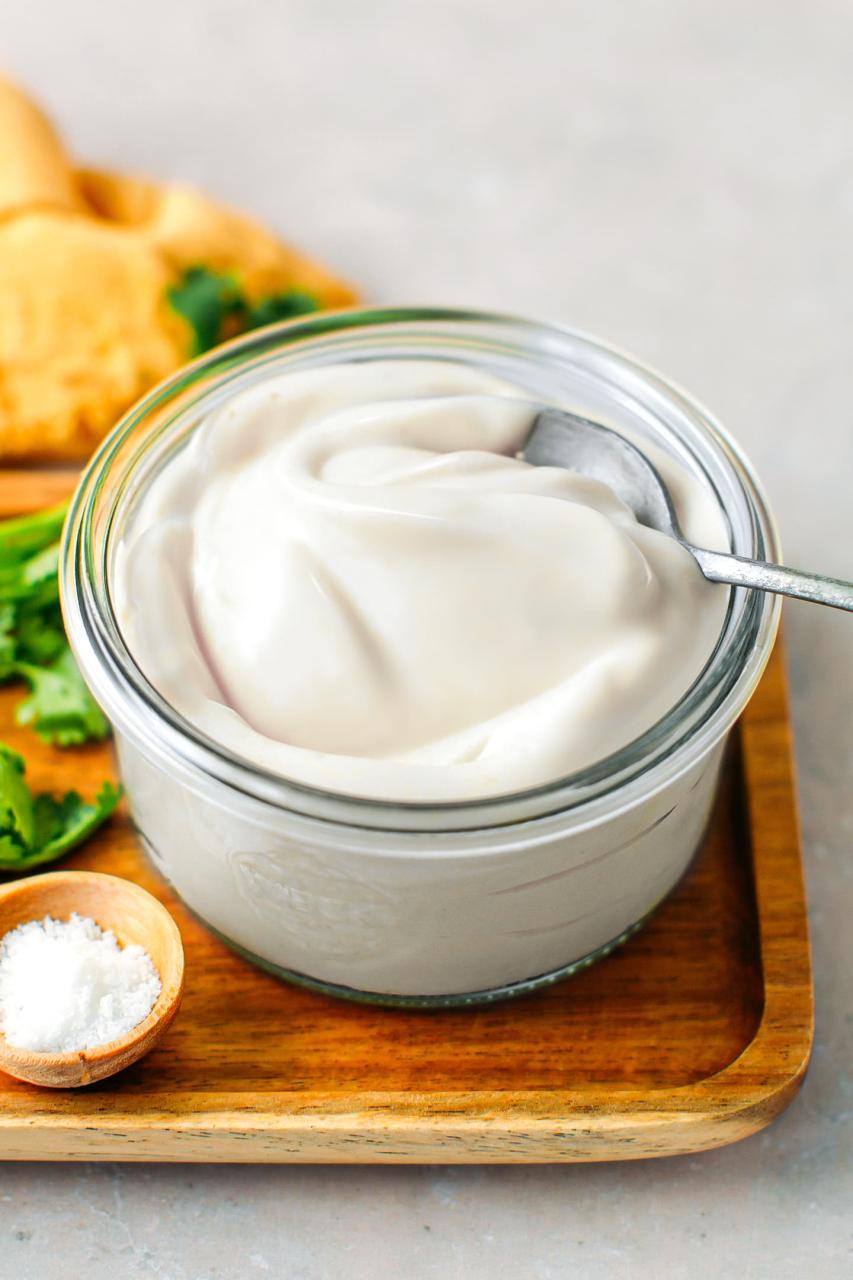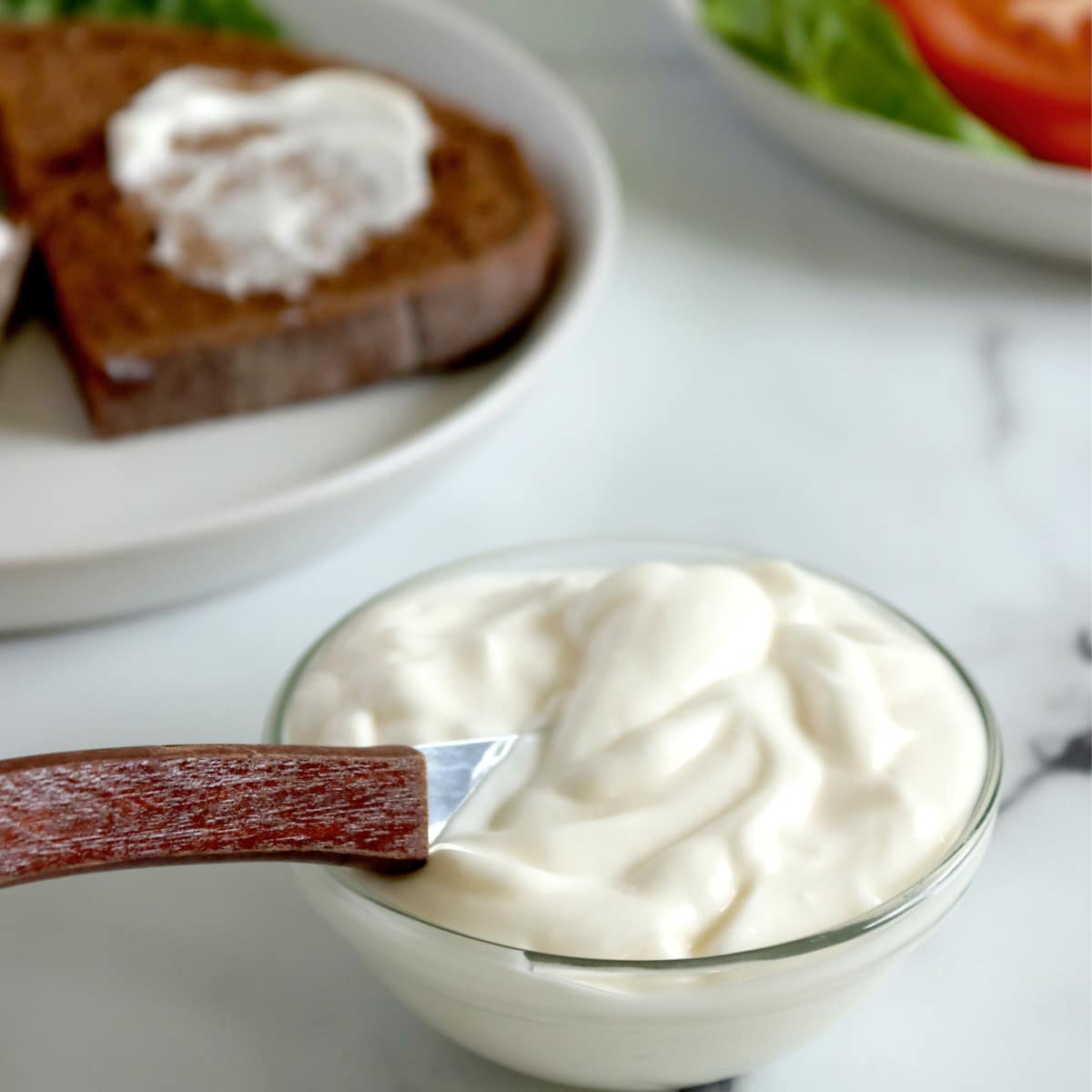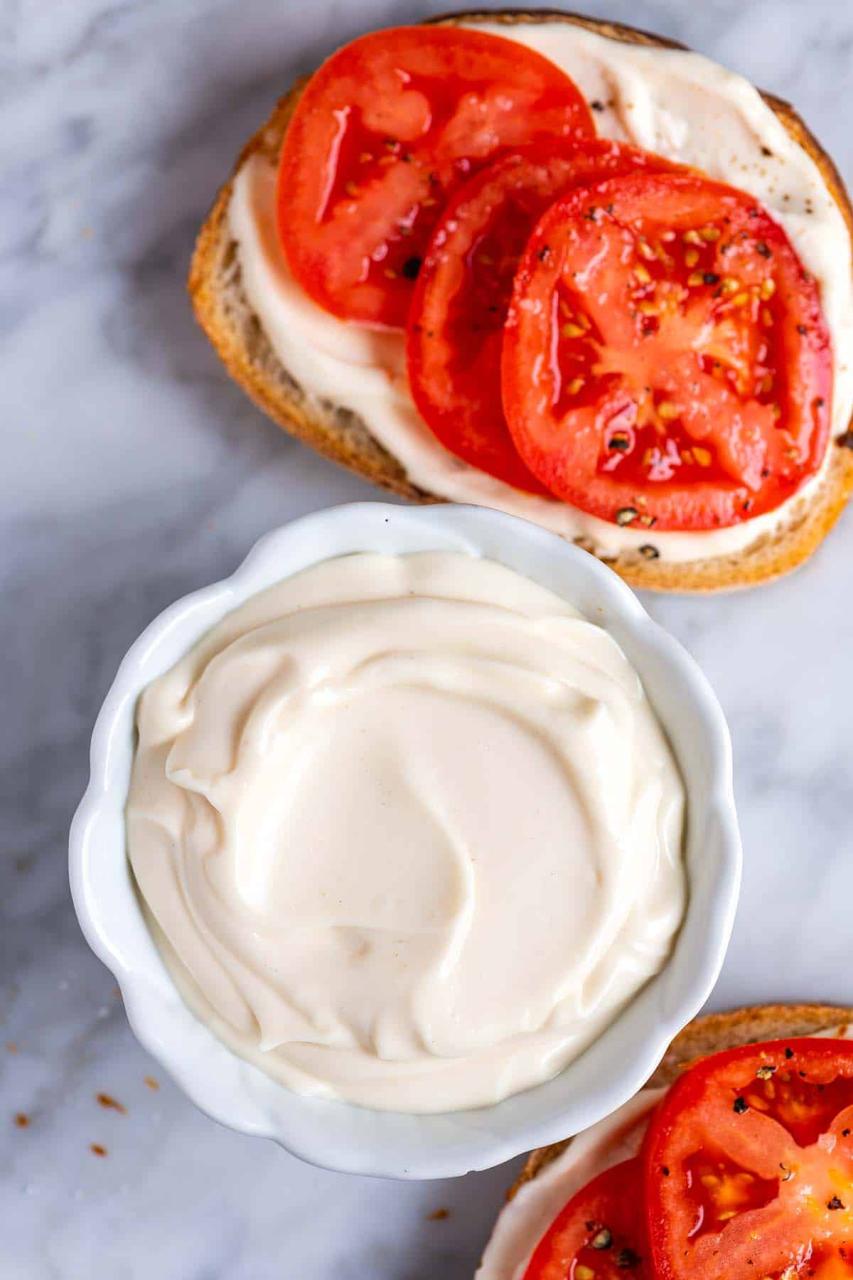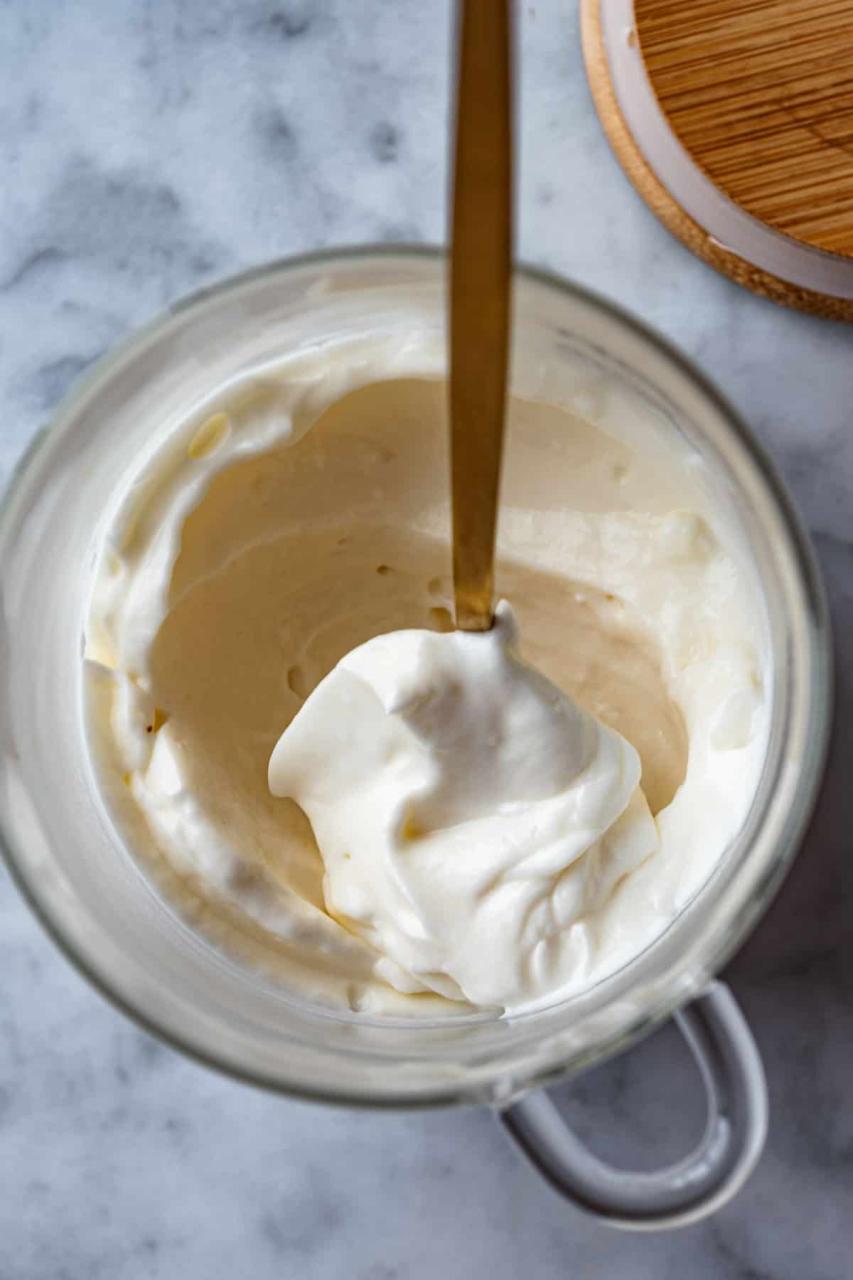Aquafaba, the viscous liquid from canned chickpeas, has revolutionized vegan cooking by serving as an excellent egg replacer due to its ability to whip and bind similar to egg whites. Quick & easy vegan aquafaba mayo utilizes this miraculous ingredient to create a creamy, plant-based mayonnaise that rivals traditional versions in texture and versatility.
To prepare vegan aquafaba mayo, one typically combines aquafaba with a source of fat—such as neutral-flavored oil like sunflower or canola—along with an acid component like lemon juice or vinegar for tanginess. Mustard, salt, and sometimes additional flavorings such as garlic are added to enhance the taste and emulate the familiar flavors of standard mayonnaise.
The process involves emulsifying these ingredients using a hand blender, stand mixer, or food processor. This method ensures that the oil is integrated steadily and smoothly into the aquafaba, creating an emulsion that thickens into a consistency similar to conventional mayo.
Vegan aquafaba mayo can be used interchangeably with traditional mayonnaise, making it ideal for spreading on sandwiches, binding salads like vegan potato or chickpea salad, and serving as a base for creamy dressings and dips.
This condiment not only caters to those who follow vegan diets but also appeals to those looking to reduce their cholesterol intake, as it is free from the eggs found in typical mayo. Moreover, utilizing a byproduct that might otherwise be discarded, aquafaba mayo is a sustainable and waste-reducing option within the culinary world.
Quick & Easy Vegan Aquafaba Mayo Recipe


Quick &Easy Vegan Aquafaba Mayo
Equipment
- 1 tall jar glass
- 1 blender
Ingredients
- 1/4 cup aquafaba the liquid/brine in a can of cooked chickpeas
- 1/4 tsp ground mustard
- 1-3 tsp brown rice syrup
- 3/4-1 cup sunflower oil
- 1 1/2 tsp apple cider vinegar
- 1/4 tsp sea salt
Instructions
- Pour the aquafaba in a tall jar glass and add the ground mustard, apple cider vinegar, brown rice syrup and salt and blend with an immersion blender on high for few minutes.
- Gradually add the cauliflower oil as the blender still running. Towards to end of the blending move the blender up and down to incorporate a little air, add additional oil if the sauce is looking too thin. The more oil you add makes the sauce to be creamier, denser, thicker the texture will become. Use the oil as recommended.
- Taste and make necessary adjustment as needed.
- Serve immediately as you want or transfer to an air tight container and keep in the fridge to chill for least 4 hours. It will thicken the more as it chill. Keep the leftover in fridge and make sure you use within 2 weeks. Don’t freeze!
Cooking tips about Quick &Easy Vegan Aquafaba Mayo

- Quality of Aquafaba: The liquid from canned chickpeas is preferred for its convenience and consistency. Ensure the can contains no added salt or preservatives that could affect the flavor of your mayo.
- Room Temperature Ingredients: To achieve the best emulsion, use aquafaba and any other ingredients like lemon juice or vinegar at room temperature.
- Blend Gradually: Start by whipping the aquafaba until it reaches soft peaks before very slowly drizzling in the oil. This gradual process helps build a stable emulsion, which is critical for the right texture.
- Neutral Oil for a Neutral Flavor: Choose a light, neutral-flavored oil like canola, sunflower, or grapeseed oil. Strong-tasting oils like olive oil can overpower the delicate taste of aquafaba mayo.
- Acid for Tanginess: Lemon juice or vinegar isn’t just for taste; it also helps stabilize the emulsion. Adjust the amount you use based on how tangy you want your mayo to be.
- Season Carefully: After the mayo has emulsified, season with salt, mustard, and any additional flavors like garlic powder or white pepper. It’s best to add these after the base has formed to prevent any interference with the emulsification.
- Stabilize if Necessary: If you have trouble with the mayo holding together, a pinch of cream of tartar or ¼ teaspoon of dijon mustard can help stabilize the mixture.
- Store Properly: Vegan aquafaba mayo should be stored in an airtight container in the refrigerator. It doesn’t contain the preservatives that store-bought versions do, so it’s typically best consumed within a week.
- Adjust Consistency: If the mayo comes out too thin, continue blending, adding oil drop by drop. If it’s too thick, blend in a teaspoon of water at a time until you reach the desired consistency.
- Repurpose Aquafaba: Don’t throw away leftover aquafaba! It can be used to make more mayo, or in other vegan recipes that require egg whites as a binder or thickener, like meringues or baked goods.
Serving suggestions about Quick &Easy Vegan Aquafaba Mayo

- Sandwich Spread: Use as a creamy spread on sandwiches or wraps, layering with fresh vegetables, vegan deli slices, and other toppings of your choice.
- Salad Dressing: Thin it out with a bit of water, vinegar, or lemon juice to dress green salads or to toss with potato or pasta salads.
- Dip: Mix with herbs and spices to create dips for fries, vegetable crudité, or chips.
- Aioli: Add minced garlic or garlic powder to make a vegan aioli perfect for spreading on burgers or dipping artichokes.
- Sauces: Combine with tomato ketchup to make a tangy seafood sauce alternative, ideal for accompanying vegan ‘fish’ dishes or as a zesty salad dressing.
- Baking: Use it as an ingredient in cakes or bread that requires mayonnaise for added moisture.
- Rice & Grains: Stir into rice, quinoa, or couscous for additional creaminess and flavor.
- Roasted Vegetables: Toss with roasted vegetables before serving to add a layer of richness.
- Vegan Sushi: Spread inside nori rolls with sushi rice and vegetables for a creamy addition.
- Coleslaw: Make a vegan coleslaw by combining the mayo with vinegar, sugar, salt, and pepper, then mixing with shredded cabbage and carrots.
Top 5 FAQs about Quick & Easy Vegan Aquafaba Mayo

- What is aquafaba and how is it used in vegan mayo? Aquafaba is the liquid from canned chickpeas and is used in vegan mayo as an egg replacement due to its ability to emulsify. It helps to create the creamy texture that resembles traditional mayonnaise when blended with oil and acid.
- Can I make Quick & Easy Vegan Aquafaba Mayo without a blender? While a blender or food processor is recommended for creating a smooth, emulsified texture, it is possible to make the mayo using a mixing bowl and a whisk. However, be prepared for this method to require more time and effort to achieve the right consistency.
- How do I prevent my vegan aquafaba mayo from separating? To prevent separation, ensure that you add the oil very slowly and steadily while blending, as a rapid addition can cause the emulsion to break. Also, make sure your ingredients are at room temperature before starting.
- What kind of oil should I use to make vegan aquafaba mayo? Neutral-flavored oils such as canola, sunflower, or grapeseed oil are ideal for making vegan aquafaba mayo, as they won’t overpower the delicate flavor of the aquafaba.
- How should I store homemade vegan aquafaba mayo and how long does it last? Store your vegan aquafaba mayo in an airtight container in the refrigerator. Since it lacks preservatives found in store-bought mayonnaise, it’s typically best consumed within a week. Make sure to label the container with the date it was made.
In conclusion, Quick & Easy Vegan Aquafaba Mayo is a testament to the ingenuity of plant-based culinary alternatives. Utilizing the often-overlooked liquid from canned chickpeas, aquafaba, this recipe provides a versatile and cholesterol-free option for those seeking a vegan-friendly condiment that doesn’t compromise on the creamy texture or full flavor of traditional mayonnaise.
With the careful emulsion of neutral oils and the addition of ingredients like mustard and vinegar for depth and zing, this vegan mayo is not just a substitute but a stand-alone delight that can be used in a myriad of ways—from sandwich spreads to salad dressings.
This sustainable choice, which makes use of an ingredient that would otherwise go to waste, is not only suitable for vegans but also for those with egg allergies or anyone interested in exploring more eco-conscious eating habits. Its simple method of preparation and the ability to customize flavors make it an attractive and accessible option in any kitchen. As we continue to evolve in our food choices and culinary creativity, recipes like Quick & Easy Vegan Aquafaba Mayo showcase the endless possibilities within vegan cuisine.
Leave a Reply